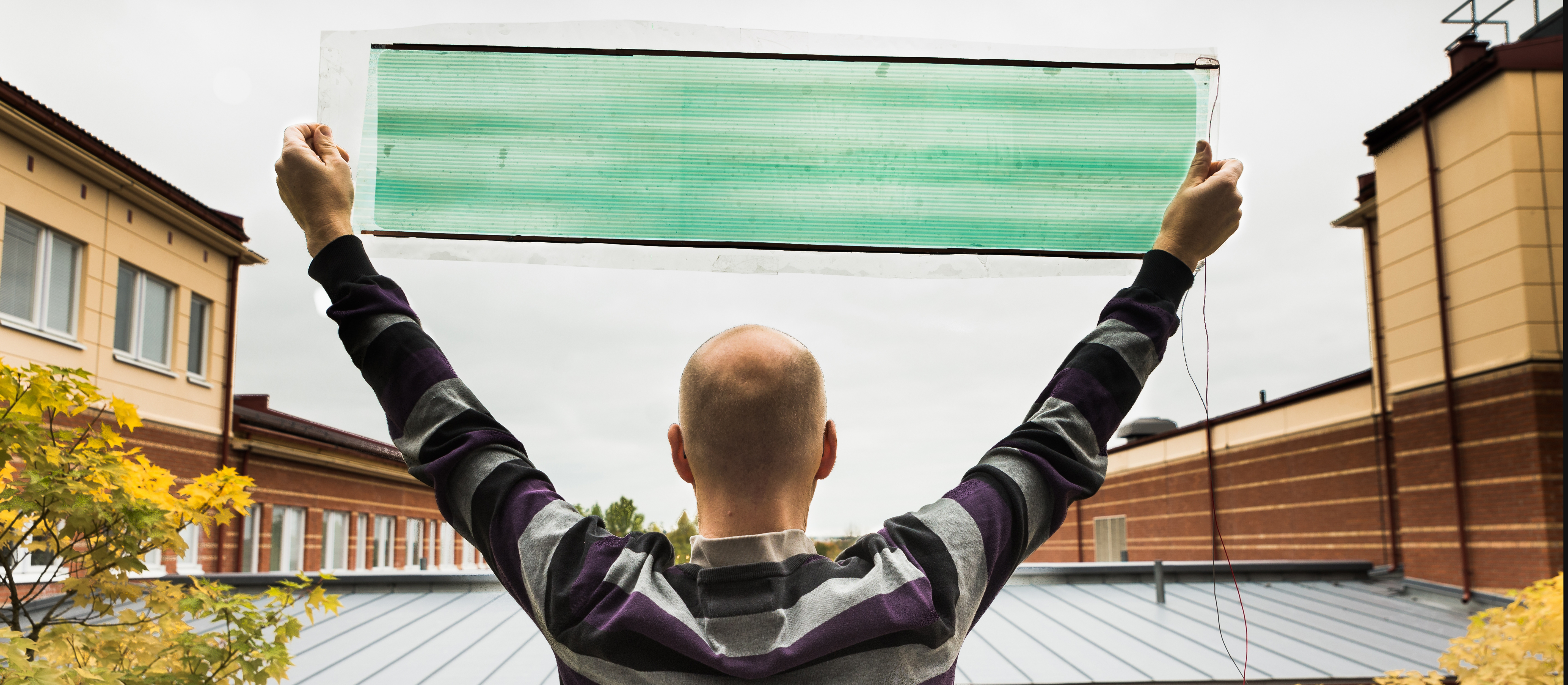Solar cells
An intense hunt is underway for new combinations of materials, and this has laid the groundwork for advances in recent years in printed organic solar cells. The energy efficiency of these cells has increased in just a few years from very low levels to 11%. LiU researchers are joint holders of the world efficiency record, and they are among the most frequently cited researchers in the world in this field. In the autumn of 2016, around 20 doctoral students and several research groups were working in organic solar cells.The results of the hard work of these scientists can be seen in the most prestigious journals in the past year: Nature Energy, Science, Advanced Materials, and several others. The research is advancing along many fronts and in collaboration with researchers in China, Germany and the US.
Printed organic solar cells are rapidly approaching commercial viability, and the research has also resulted in spin-off companies.
LiU researchers also study solar cells and light-emitting diodes that contain perovskites, new materials that can consist of a mixture of plastic and metal.
Research is also under way in the use of the organic materials to regulate the passage of solar energy through windows. Such windows can contribute to heating a building in the winter and cooling it in the summer, at the same time as they generate electricity.

